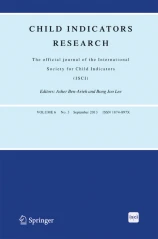Metaphorical Dialogue: an Innovative Strategy for Capturing Children’s Experience of Subjective Well-being
Abstract
Researchers conducting child-centered studies are expected to develop strategies that allow them to not only gain access to and accurately understand children’s experiences, but also position children’s participation and empowerment in the forefront. One possible way to promote this research approach is through the use of metaphorical methods. However, little is known about the use of such methods. This article aims to introduce an innovative metaphorical narrative-based data collection methodology developed and validated in a study documenting immigrant children’s understandings and experiences of their well-being. The study was conducted in collaboration with two community centres in Montréal, Québec, Canada, offering services to a majoritively immigrant population. Twenty-two children between the ages of six and twelve attending these organizations’ programs participated in four multi-activity workshops. The various activities were developed around a metaphorical character: an alien named Miinx visiting planet Earth on a mission to better understand Earthling children’s conceptions and experiences of well-being. Each workshop was connected to a letter the alien sent the children. The activities fostered self-expression through discussions, image sorting, drawing, crafting, writing, and acting. The metaphorical framework was appreciated by children and seem to allowed them to share personal opinions and life events in an indirect way. Using a pretend character to interact with children can help them feel comfortable, as they are positioned as the experts, tasked with teaching someone unfamiliar with their reality about the way they experience and understand it. By demonstrating the use of a metaphorical character in research, this study contributes to the development of participative methods in child-centred research.
Members and SHERPA Teams

Christine Gervais
Professeure au département des sciences infirmières, Université du Québec en Outaouais (UQO)

